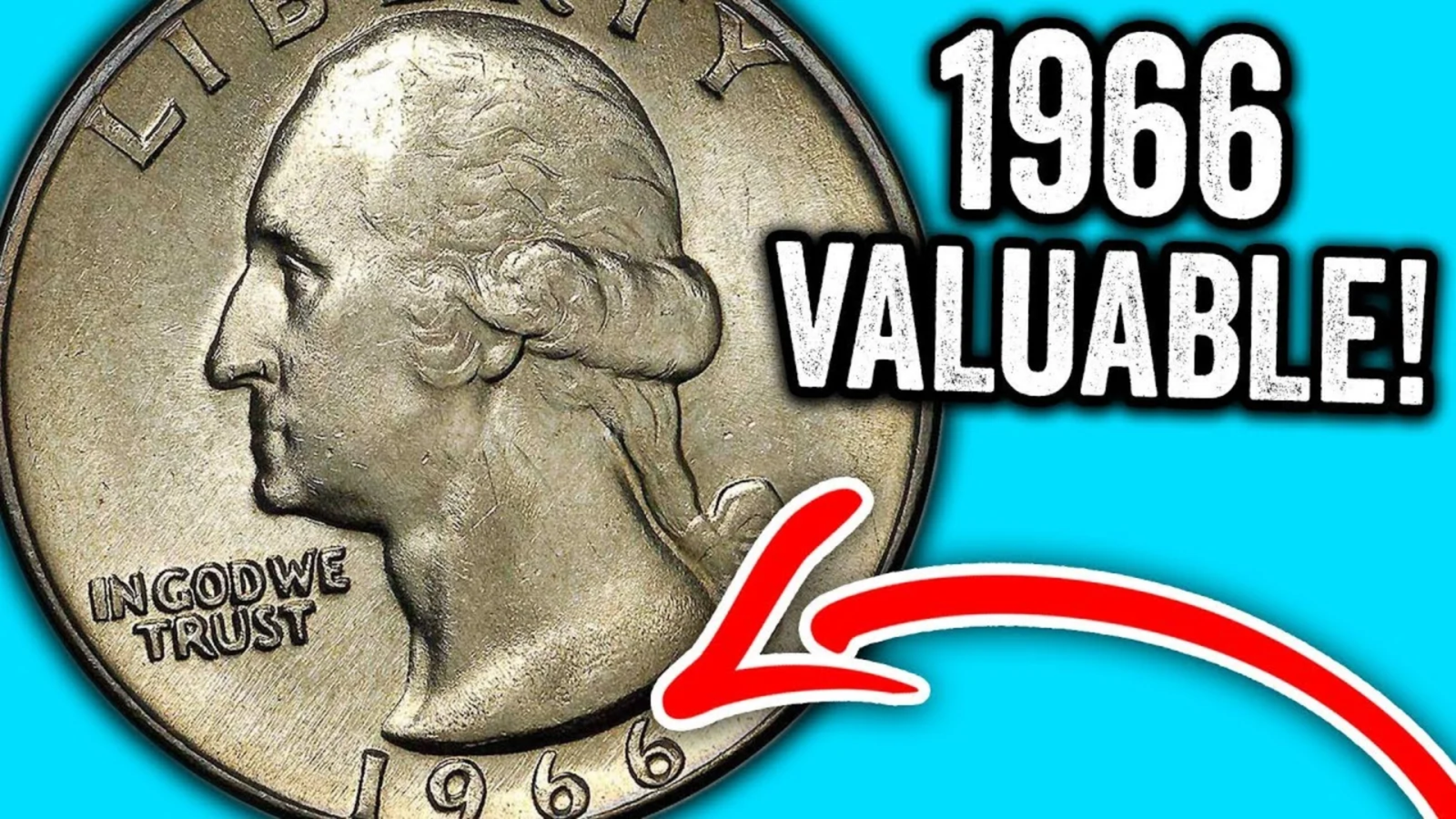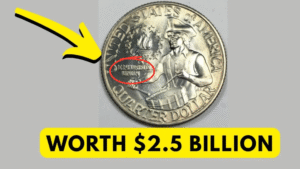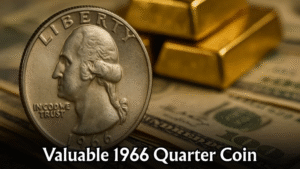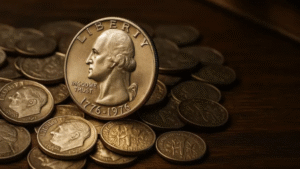Hunt for the Rare 1966 Washington Quarter: Imagine finding a quarter in your pocket that’s worth $20 million! The 1966 Washington Quarter, a coin you might see in your change, could be hiding a rare version that collectors dream about. In the world of coin collecting (numismatics – the hobby of collecting coins), this quarter is a treasure due to its unique features. This article will explain why some 1966 quarters are so valuable, how to spot them, and where they might be hiding. Let’s start the search for this million-dollar coin!
The Story of the 1966 Washington Quarter
The 1966 Washington Quarter is more than just pocket change—it’s a piece of U.S. history with a chance to be worth a fortune.
A Classic Coin Design
Introduced in 1932 to honor George Washington’s 200th birthday, the Washington Quarter features his portrait on the front (obverse – main side) and an eagle on the back (reverse – other side), designed by John Flanagan. In 1966, the U.S. Mint made over 821 million of these quarters in Philadelphia, with no mint mark due to a temporary rule to stop hoarding.
The $20 Million Rumor
While most 1966 quarters are worth just 25 cents, rumors suggest a rare version—possibly struck on the wrong metal or with a unique error—could be valued at $20 million. Though no public sale has hit this amount, similar rare coins have sold for millions, fueling excitement.
Why the 1966 Washington Quarter Is So Valuable
Certain factors make this quarter a collector’s jackpot:
Rare Minting Errors
Mistakes during production can create valuable coins. For 1966, collectors look for:
- Silver Planchet Error: A few quarters might have been accidentally struck on 90% silver blanks (leftover from pre-1965 coins) instead of the new copper-nickel mix.
- Double Die Error: Text or images, like “LIBERTY” or Washington’s portrait, may appear doubled.
- Off-Center Strike: The design is misaligned, missing parts of the image.
Special Mint Set (SMS) Coins
In 1966, the Mint made Special Mint Sets (SMS) for collectors, with about 2.2 million sets produced. These coins have a shiny, almost proof-like finish and sharper details, making them more valuable, especially if graded “Cameo” or “Deep Cameo” (DCAM).
Perfect Condition
Coins in mint condition (no wear, graded MS-65 or higher by PCGS or NGC) fetch high prices. A rare error coin in perfect shape could drive its value into the millions.
Historical Context
The 1966 quarter was part of a shift from silver to copper-nickel coins after the 1965 Coinage Act, due to rising silver prices. Errors from this transition period are highly prized.
How to Spot a $20 Million 1966 Washington Quarter
Think you’ve found a treasure? Here’s how to check:
Check the Date and Mint Mark
Look for the “1966” date on the front. Since no mint marks were used in 1966, all quarters lack a “D” or “S”. Use a magnifying glass to see details clearly.
Look for Errors or Special Features
Check for a silver-like shine (not copper-nickel), doubled text, or off-center designs. SMS coins may have a mirror-like or satin finish with sharp details.
Test the Weight
A regular 1966 quarter weighs about 5.67 grams (copper-nickel). A silver error coin would weigh closer to 6.25 grams. Use a precise digital scale to check.
Verify Authenticity
Fakes exist, so never clean a coin—it lowers its value. Take it to PCGS or NGC (coin grading services) for professional authentication.
Are These Quarters Still in Circulation?
Yes, it’s possible! With over 821 million 1966 quarters minted, some are still in change, bank rolls, or old coin jars. Rare error coins or SMS versions could be hiding in cash registers, vending machines, or family collections.
Valuable 1966 Washington Quarters to Watch For
Here are key versions to look for:
| Coin Type | Key Features | Estimated Value |
|---|---|---|
| 1966 Silver Planchet Error | Struck on 90% silver | Up to millions |
| 1966 Double Die Obverse | Doubled text or portrait | Up to $50,000+ |
| 1966 SMS (Cameo/Deep Cameo) | Shiny, sharp finish | $50-$1,500+ |
| 1966 Off-Center Strike | Misaligned design | Up to $10,000+ |
Values depend on condition and market demand.
Tips for Protecting Your Quarters
If you find a potential treasure:
- Don’t Clean It: Cleaning can scratch it and reduce value.
- Handle Carefully: Use gloves and hold by the edges to avoid fingerprints.
- Store Safely: Place in a plastic holder to protect from air and damage.
- Get It Graded: PCGS or NGC can confirm authenticity and boost value.
- Find Buyers: Contact auction houses like Heritage Auctions or Stack’s Bowers after grading.
Join coin clubs or visit coin shows to learn more and connect with collectors.
Conclusion: Your Quarter Could Be a Million-Dollar Find
The 1966 Washington Quarter, with rare errors like a silver planchet or double die, could be worth up to $20 million. Its historical significance and potential rarity make it a collector’s gem. Check your change, coin jars, or old collections—you might find a fortune! Coin collecting is a fun way to explore history and possibly get rich. Visit a local coin shop or auction platforms like Heritage Auctions to start your hunt. Grab a magnifying glass and look closely; your next quarter could change your life!
Frequently Asked Questions (FAQ)
What is the $20 million 1966 Washington Quarter? It’s a rare 1966 quarter, possibly struck on a silver planchet or with errors like doubled text, valued for its rarity and condition.
Why is this quarter so valuable? Rare errors (silver planchet, double die), SMS finishes, perfect condition, and the 1965-1966 silver-to-clad transition drive its value.
How do I spot a valuable 1966 quarter? Check for a 1966 date, no mint mark, silver shine, doubled text, or a shiny SMS finish. Get it graded by PCGS or NGC.
Are these quarters still in circulation? Yes, they can be in change, bank rolls, or old collections, though rare errors are hard to find.
Where can I sell a rare 1966 quarter? Try auction houses like Heritage Auctions, coin shops, or eBay after grading by PCGS or NGC.



